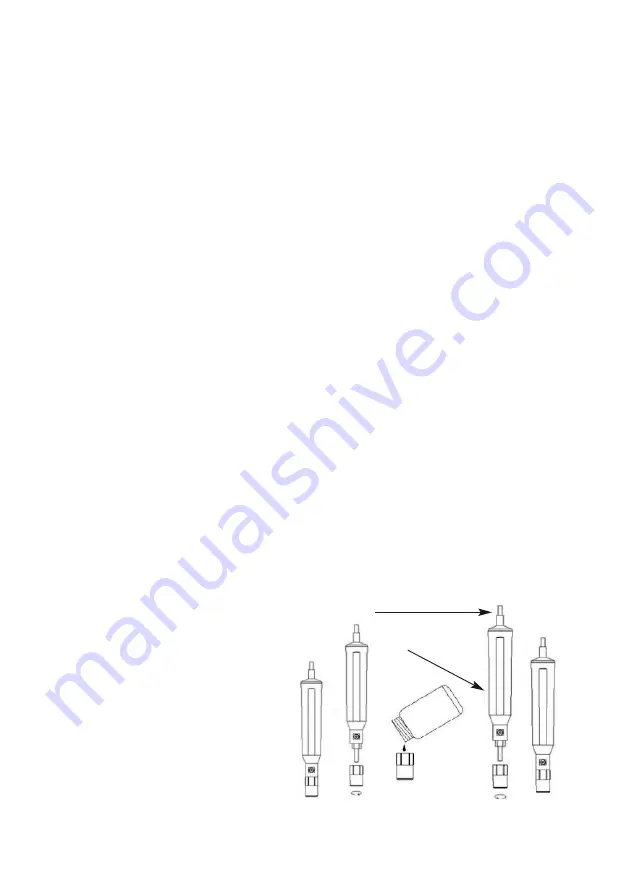
11. Compensate DO measurements for altitude in meters.
Once DO measurements
have been compensated for salt, the term “High-” will appear in the lower portion of
the display. Press the
▲
or
▼
button repeatedly until the reading on the upper portion
of the display matches your altitude in meters. Then press the REC/ENTER button to
store this value as the temporary default.
12. Compensate DO measurements for altitude in feet.
Once DO measurements have
been compensated for salt, the term “Highf” will appear in the lower portion of the
display. Press the
▲
or
▼
button repeatedly until the reading on the upper portion of
the display matches your altitude in feet. Then press the REC/ENTER button to store
this value as the temporary default.
Once the altitude compensation in feet has been set and stored, the display will then
either return to the first of the ten steps in the setup sequence--choosing whether or not
to format the SD memory card—or show the term “ESC”. If “ESC” appears, press the
HOLD/ESC button to exit the setup procedure and enter normal operating mode. In this
mode, the display will show “mg/L” units by default.
CALIBRATING THE OXYGEN PROBE
The DOM5512SD’s oxygen probe
must be calibrated
before you use it for the first time,
and again before each use after a long period (weeks or months) of sitting idle. General
also recommends calibrating the probe before making any measurements that must be
extremely precise.
1. Before calibrating the probe,
make sure that it is full of fresh electrolyte. Use the
following procedure—while referring to Fig. 2—either to fill the probe with electrolyte
or to replace old electrolyte with fresh electrolyte.
1. Unscrew the probe head from the probe handle.
2. Empty and dispose of any residual electrolyte from the probe head’s reservoir.
3. Pour fresh electrolyte into the reservoir.
4. Screw the probe head back into the probe body.
2. Fill the probe head
with electrolyte.
To calibrate the DOM5512SD, use
the following procedure while
referring to Figures 1 and 3:
8
PROBE HANDLE
PROBE PLUG
PROBE-FILLING
ELECTROLYTE
Fig. 2. Filling the probe head
with electrolyte


































